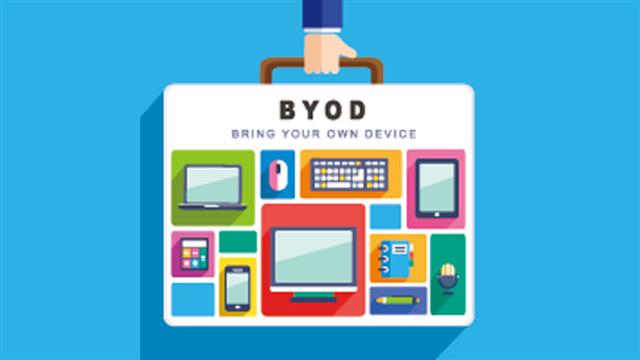While new smartphone models by the two digital giants were snapped up once they hit the market—Apple sold 10 million iPhone 6s just three days after the launch—Tim Cook, Apple's CEO, anticipated that the new phones could spark a massive upgrade cycle from consumers.
With smartphones getting 'smarter', i.e., being able to perform more complex tasks, people can not only access e-mails, but also store, share and work on company documents. A study by IBM says that 82% of employees think that smartphones play a critical role in business, making it top on the list of devices on the BYOD list.
Coined in 2005, the term BYOD refers to bringing your own devices such as smartphones, laptops and tablets to the office and using them for business purposes. A report by Juniper Research found that BYOD has the potential to benefit organizations in terms of enhanced employee satisfaction and productivity as users are more comfortable with their personal devices.
Over the last decade, the BYOD trend has picked up significant momentum. However, BYOD also poses a security threat to the business network as company data accessible by personal devices is jeopardized if the device falls into someone else's hand. According to a research by IBM, one in nine mobile devices gets stolen and one in 11 gets lost.
Such kind of concern triggered the drawing up of BYOD policy which led to the emergence of mobile device management software and applications. Google has recently bought a BYOD software developer, and also upgraded its existing remote device management platform.
Take smartphones for example, one of the latest management solutions is to deploy both a business number and a personal number for one smartphone, with separate billing for voice, data and messaging usage on each number. Employees thus can switch between business and personal profiles easily without carrying two phones. It can be set to delete an inactive account from a smartphone automatically if it has not been synced for a predetermined number of days.
Coupled with an explosion in 4G networks, the International Data Corporation expects that close to 155 million smartphones and four millions tablets will be used in the BYOD model across the Asia-Pacific region in 2014. Juniper Research has forecast that the number of employees using smartphones and personal tablets in the course of their work will exceed one billion by 2018. The growing trend of BYOD is redefining business connectivity, so be prepared for the challenge.


